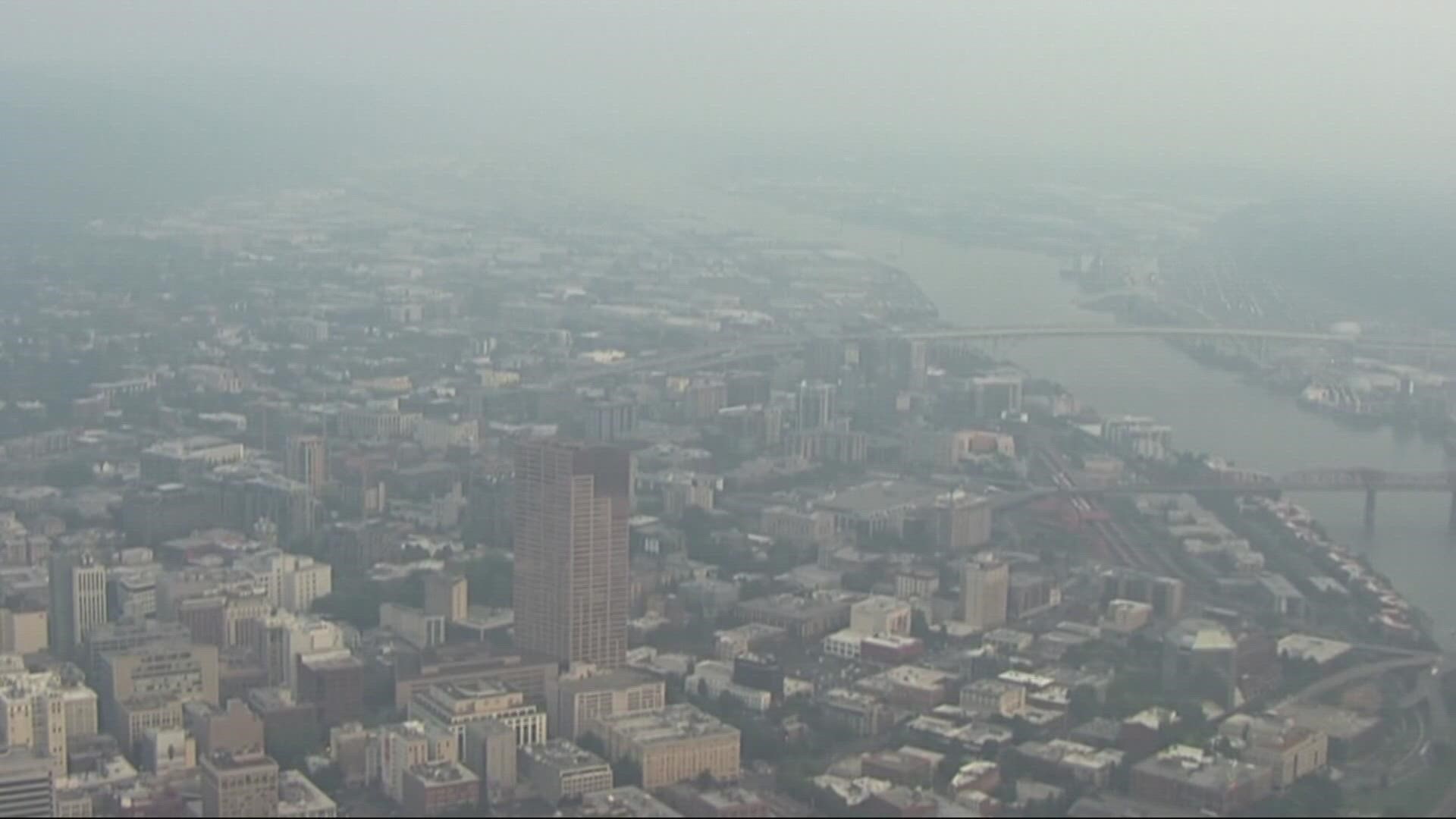PORTLAND, Ore. — Wildfire season has arrived in the Pacific Northwest, and with it comes concerns about harmful air quality.
Ground-level ozone, the main part of smog, and particle pollution are just two of the main threats to air quality and public health in the U.S., according to the Centers for Disease Control and Prevention (CDC).
“The first one is ground-level ozone or surface ozone. And what happens here is that nitrogen mixes with certain organic compounds and it produces this ozone, but more of it is produced with high heat and a lot of sunlight,” said Dr. James Polo, executive medical director for Regence Blue Cross Blue Shield of Oregon.
Emissions from industrial facilities and electric utilities, motor vehicle exhaust, gasoline vapors, and chemical solvents are some of the major sources of ground-level ozone.
Then there's particle pollution or particulate matter, which includes things like dust, dirt, soot and smoke.
Ground-level ozone and particle pollution can affect anyone, but it bothers some more than others.
“For young kids, they can be a little bit more at risk because they have developing respiratory systems,” Dr. Polo said. “And then folks that have any kind of lung disease or cardiac condition will be more at risk. And then the elderly as well.”
For people who are generally healthy, the consequences can be everything from wheezing and coughing to difficulty breathing, particularly if you’re outdoors in poor air quality for an extended period of time, according to Dr. Polo.
For most people, those symptoms should subside when the air quality improves. If it doesn’t, that is when Dr. Polo recommends reaching out to your primary care physician.
Exposure to poor air quality can also make existing conditions, like asthma and chronic obstructive pulmonary disease (COPD), worse over time.
“Over time, if you’re exposed, it can actually lead to cardiac disease or even having a stroke. So it’s very important that you’re monitoring air quality,” Dr. Polo said.
The best way to do that can be as simple as tuning into the morning news to get updates on air quality warnings. You can also find the daily air quality index online at places like airnow.gov, iqair.com and KGW.com.
Here’s a breakdown of the Air Quality Index:
Green means good: At 0-50, it means air quality is satisfactory and air pollution poses little or no risk.
Yellow means moderate: At 51-100, it means air quality is acceptable. However, there may be a risk for some people, particularly those who are unusually sensitive to air pollution.
Orange means unhealthy for sensitive groups: At 101-150, this means members of sensitive groups may experience heath effects. The public is less likely to be affected.
Red means unhealthy: At 151-200, some members of the public may experience health effects; members of sensitive groups may experience more serious health effects
Purple means very unhealthy: At 201-300, this reading is a health alert, meaning the risk of health effects is increased for everyone.
Maroon means hazardous: At 301 or higher, this marks a health warning of emergency conditions: everyone is more likely to be affected.
In Oregon and Southwest Washington, we’re no stranger to hazardous air quality due to wildfire smoke. Even when wildfires are miles and miles away, that smoke can impact air quality. You may remember in September 2020, Portland briefly had the worst air quality in the world because of wildfire smoke.
So what can we do to protect ourselves from dangerous air quality?
Limit your time outside and think about spending more time indoors. If you are going to be outdoors, be sure to avoid strenuous activity. Wear an N95 or P100 mask to filter out particulates, but remember anything less, such as a cloth mask, won’t do the trick. Set up a portable air cleaner and set your air conditioner to recirculate.
“If you’re going to be using any kind of an air conditioner or kind of a portable air cleaner, you’re going to want to make sure the filters are clean and replaced regularly,” Dr. Polo said. “And you want to make sure it’s functioning correctly, so it’s reticulating the air.”

